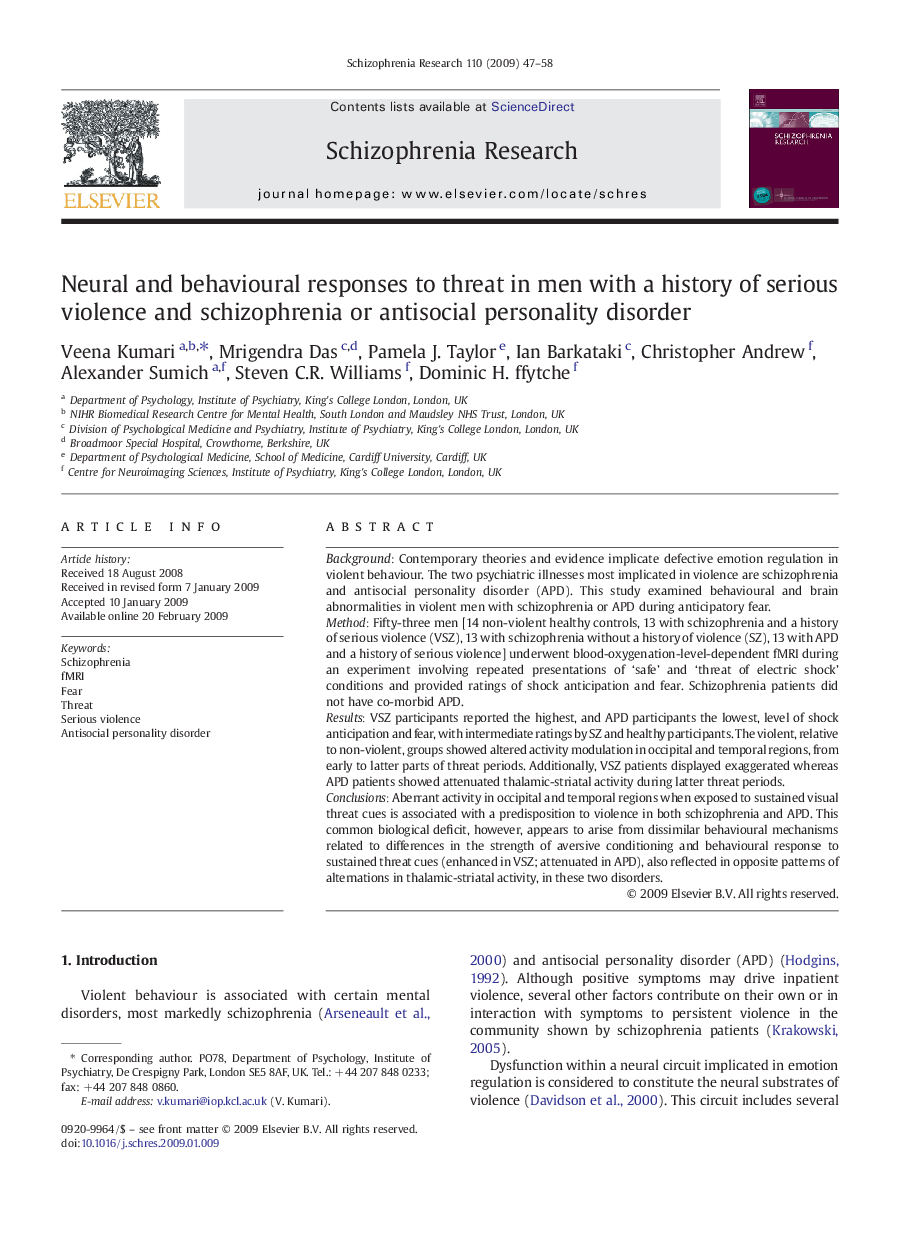| کد مقاله | کد نشریه | سال انتشار | مقاله انگلیسی | نسخه تمام متن |
|---|---|---|---|---|
| 339372 | 548076 | 2009 | 12 صفحه PDF | دانلود رایگان |

BackgroundContemporary theories and evidence implicate defective emotion regulation in violent behaviour. The two psychiatric illnesses most implicated in violence are schizophrenia and antisocial personality disorder (APD). This study examined behavioural and brain abnormalities in violent men with schizophrenia or APD during anticipatory fear.MethodFifty-three men [14 non-violent healthy controls, 13 with schizophrenia and a history of serious violence (VSZ), 13 with schizophrenia without a history of violence (SZ), 13 with APD and a history of serious violence] underwent blood-oxygenation-level-dependent fMRI during an experiment involving repeated presentations of ‘safe’ and ‘threat of electric shock’ conditions and provided ratings of shock anticipation and fear. Schizophrenia patients did not have co-morbid APD.ResultsVSZ participants reported the highest, and APD participants the lowest, level of shock anticipation and fear, with intermediate ratings by SZ and healthy participants. The violent, relative to non-violent, groups showed altered activity modulation in occipital and temporal regions, from early to latter parts of threat periods. Additionally, VSZ patients displayed exaggerated whereas APD patients showed attenuated thalamic-striatal activity during latter threat periods.ConclusionsAberrant activity in occipital and temporal regions when exposed to sustained visual threat cues is associated with a predisposition to violence in both schizophrenia and APD. This common biological deficit, however, appears to arise from dissimilar behavioural mechanisms related to differences in the strength of aversive conditioning and behavioural response to sustained threat cues (enhanced in VSZ; attenuated in APD), also reflected in opposite patterns of alternations in thalamic-striatal activity, in these two disorders.
Journal: Schizophrenia Research - Volume 110, Issues 1–3, May 2009, Pages 47–58